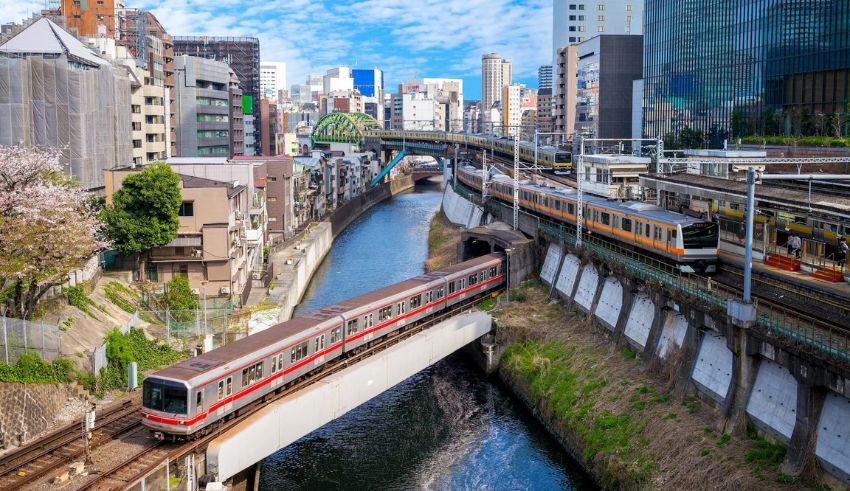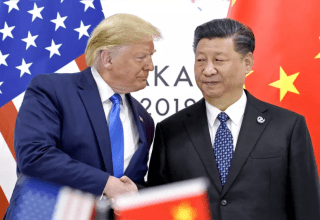
Tokyo Metro is unique in history and changes local public transit since it is the first subway system in Asia. In 1927 Tokyo inaugurated its first 2.2-kilometer subway line to connect two crowded areas of the city, Ueno and Asakusa. Tokyo was the first Asian city to construct an underground train, following London’s lead and which had established the first subway system in 1863, therefore earning a remarkable success. Though short by modern standards, the initial track was significant for commuters since it offered a faster and more efficient replacement for the crowded trams running over the streets.
From the beginning, the subway service was widely sought after. Trains arriving laden with people eager to get off the congested city highways every three minutes But the system’s spread stopped both during and after World War II as the nation struggled toward recovery from the horrific consequences of the war. Until the post-war economic boom, when Japan rebuilt itself as a significant world economic force, construction lacked great excitement. Beginning to expand rapidly during the 1960s, Tokyo’s subway system reflected the country’s ongoing modernizing drive.
Modern Transit Giant: Tokyo Metro’s iconic lines of expansion
Tokyo Metro registered as a company in 2004, therefore bringing a fresh new brand image. Reflecting the vital role the subway system performs in the life of millions of Tokyo residents, the network modified its former “S” for subway logo with a more modern heart-shaped “M.” Tokyo Metro is particularly remarkable with nine lines—Ginza, Marunouchi, Hibiya, Tozai, Chiyoda, Yurakucho, Hanzomon, Namboku, and Fukutoshin—that stretch 195 kilometers altogether today. Tokyo, the largest metropolitan region on Earth, depends on this vast subterranean network to ensure that millions of people can travel the city with ease.
Overall, the Tokyo Metro system is known for timeliness, speed, and cleanliness. The corporation prioritizes maintaining a hygienic and air-conditioned workplace since trains usually arrive on time. Tokyo Metro stands out also for the distinctive cultural touch it brings to the daily journey. Every station on the network produces unique jingles when a train pulls in the platform. For instance, the Marunouchi Line of Ginza Station adds two amazing songs, “Tomorrow’s Door” and “The March of a Little Bird,” therefore improving the travel experience both practically and aesthetically.
Tokyo Metro’s nine lines are a component of a significantly more comprehensive integrated system than they are autonomous routes from. Except for two of its lines, which link with other train companies, they let people from far-off areas reach Tokyo straight in. Apart from Tokyo Metro, the public transportation system of the city consists of four subway lines run by Tokyo Metropolitan Government, commercial rail companies, and overground routes of East Japan Railway such the Yamanote Line, thereby making a vital loop around the city. Together, these systems ensure that commuters have quick access to any part of Greater Tokyo.
Tokyo Metro Financial milestone record IPO
Tokyo Metro’s financial journey made historical significance when it launched Japan’s largest initial public offering (IPO) since 2018 on October 21, 2024. The event attracted significant investor enthusiasm as shares traded at 1,725 yen, a clear 45 percent increase over the issue price of 1,200 yen. This sudden rise in value highlighted the enormous demand for Tokyo Metro’s stock, supposedly 15 times oversubscribed among investors seeking to get a piece in one of Japan’s most significant and dependable public transport corporations.
Significant funds raised by the IPO will be allocated to major national projects including bond repayment for the reconstruction of northeastern Japan following the catastrophic 2011 earthquake, tsunami, and nuclear catastrophe. These donations help to support ongoing efforts to reconstruct the region and provide necessary infrastructure for catastrophe victims. Tokyo Metro not only proved its significance as a big participant in Japan’s transportation scene but also emphasized its more general commitment to the country’s recovery and development by linking its IPO to such a crucial cause.
Government Stake Lowered; Investor Attractions Added
Before the IPO, the Tokyo Metropolitan Government and the national government co-owned Tokyo Metro. Together, these two entities controlled the company; the national government owned little more than half of the shares, while the city owned the remainder. Private investors could enter Tokyo Metro and a wider spectrum of stakeholders could benefit from its continuous performance as the IPO lowers total state ownership to roughly 50 percent.
As part of its IPO strategy, Tokyo Metro offered specific incentives meant to attract cash. Those who purchased 200 shares or more were given free passes to the Tokyo Metro Museum, access to the company’s golf facility, and free tempura toppings from its well-known noodle vendors located around train stations. These advantages added a pleasant and personal element to the investment, therefore increasing the bond between shareholders and the brand going beyond just financial returns. These incentives particularly drew in private investors since Tokyo Metro’s focus on creating shareholder wealth while maintaining a clearly local and cultural touch emphasizes.
Safety innovations: Tokyo Metro’s natural disaster ready approach
Tokyo Metro’s primary priority is safety, particularly given a country like Japan’s earthquake frequency. Modern equipment on the company’s trains allows the trains to stop automatically should a significant earthquake happen. Based on seismic data from monitoring stations, this real-time reaction system ensures that trains stop before an earthquake strikes, therefore providing the required layer of passenger safety.
Tokyo now deals again with another challenge from climate change: increased frequency of flooding and rain. While some city subway stations flooded in August 2024 with heavy rain, Tokyo Metro’s infrastructure is designed to withstand such circumstances. Among the most crucial flood prevention tools are the biggest flood tank in the world, a vast subsurface reservoir under Greater Tokyo. By shielding the subway system from typhoons and hurricanes, this extensive building ensures Tokyo Metro’s uninterrupted operation even in very unfavorable surroundings.
The Part Tokyo Metro Perform in Future Japan
Looking ahead, Tokyo Metro’s contribution to national development and public transportation in Japan becomes ever more significant. Through its IPO, the company has positioned itself as a significant player in the national financial scene attracting both domestic and foreign investors ready to support its expansion. Tokyo Metro is not just a pillar of Tokyo’s infrastructure but also a symbol of the country’s resilience and innovation with its sophisticated safety measures, efficient operations, and perfect link with other transit systems.
Tokyo Metro’s investments in cutting-edge technologies, commitment to passenger safety, and distinctive blend of modernism and history help to define urban transportation networks all around. Whether by its ongoing development, financial success, or contribution in emergency readiness, Tokyo Metro is still a prominent role in deciding the course of Japanese transportation and the welfare of its people.




